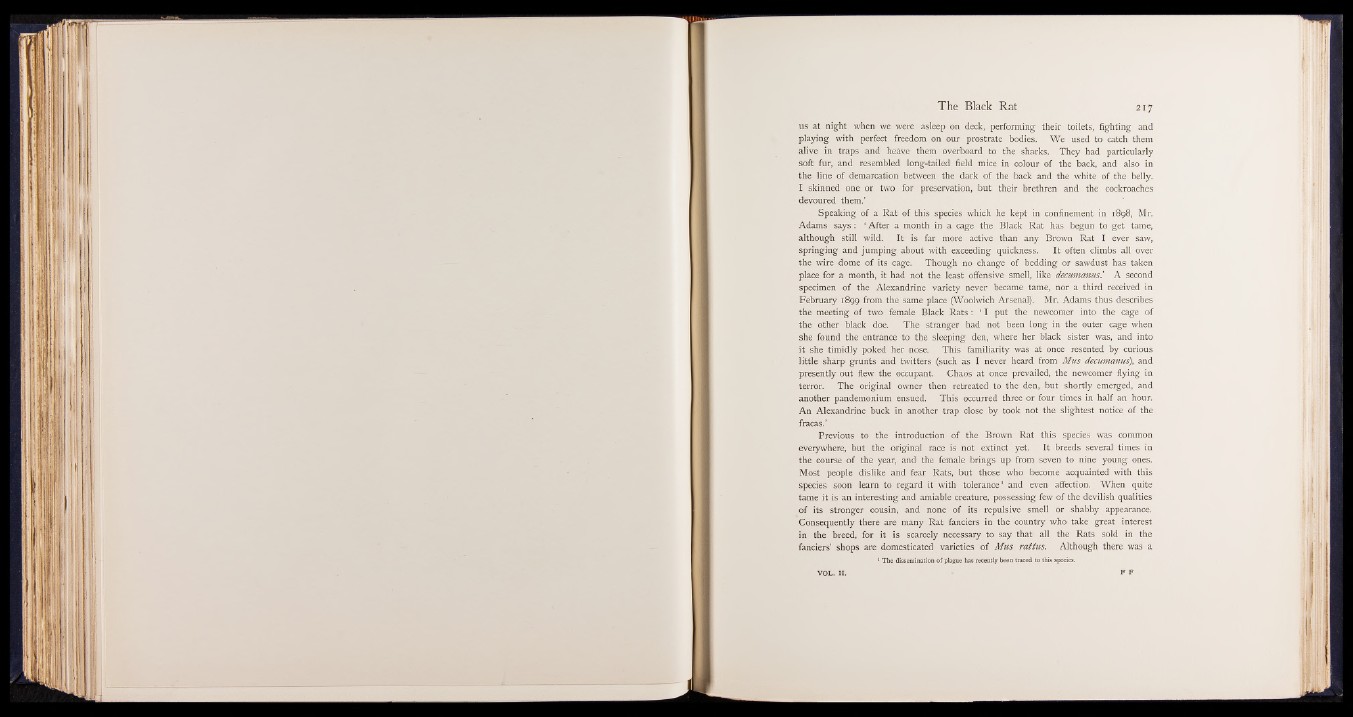
us at night when we were asleep on deck, performing their toilets, fighting and
playing with perfect freedom on our prostrate bodies. We used to catch them
alive in traps and heave them overboard to the sharks. They had particularly
soft fur, and resembled long-tailed field mice in colour of the back, and also in
the line of demarcation between the dark of the back and the white of the belly.
I skinned one or two for preservation, but their brethren and the cockroaches
devoured them.’
Speaking of a Rat of this species which he kept in confinement in 1898, Mr.
Adams sa y s : ‘ After a month in a cage the Black Rat has begun to get tame,
although still wild. It is far more active than any Brown Rat I ever saw,
springing and jumping about with exceeding quickness. It often climbs all over
the wire dome of its cage. Though no change of bedding or sawdust has taken
place for a month, it had not the least offensive smell, like decumanus.’ A second
specimen of the Alexandrine variety never became tame, nor a third received in
February 1899 from the same place (Woolwich Arsenal). Mr. Adams thus describes
the meeting of two female Black Rats : put the newcomer into the cage of
the other black doe. The stranger had not been long in the outer cage when
she found the entrance to the sleeping den, where her black sister was, and into
it she timidly poked her nose. This familiarity was at once resented by curious
little sharp grunts and twitters (such as I never heard from Mus decumanus), and
presently out flew the occupant. Chaos at once prevailed, the newcomer flying in
terror. The original owner then retreated to the den, but shortly emerged, and
another pandemonium ensued. This occurred three or four times in half an hour.
An Alexandrine buck in another trap close by took not the slightest notice of the
fracas.’
Previous to the introduction of the Brown Rat this species was common
everywhere, but the original race is not extinct yet. It breeds several times in
the course of the year, and the female brings up from seven to nine young ones.
Most people dislike and fear Rats, but those who become acquainted with this
species soon learn to regard it with tolerance1 and even affection. When quite
tame it is an interesting and amiable creature, possessing few of the devilish qualities
of its stronger cousin, and none of its repulsive smell or shabby appearance.
Consequently there are many Rat fanciers in the country who take great interest
in the breed, for it is scarcely necessary to say that all the Rats sold in the
fanciers’ shops are domesticated varieties of Mus rattus. Although there was a
1 The dissemination of plague has recently been traced to this species.
VOL. I I . F F